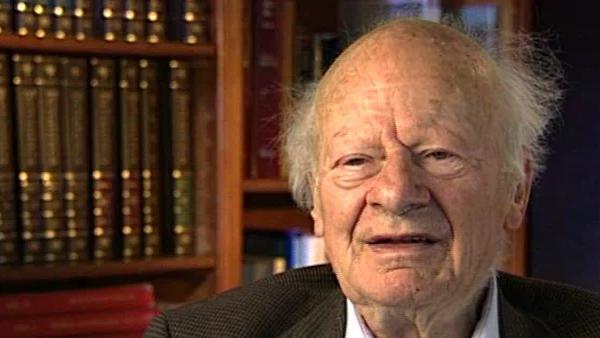NEXT STORY

Joseph Taylor's work on binary neutron stars
RELATED STORIES

NEXT STORY

Joseph Taylor's work on binary neutron stars
RELATED STORIES


|
Views | Duration | |
|---|---|---|---|
| 121. The Alpher-Bethe-Gamow paper | 1 | 843 | 01:39 |
| 122. Studying nuclear matter with Jeffrey Goldstone | 433 | 04:24 | |
| 123. Research on the binding of nuclear matter | 284 | 03:16 | |
| 124. Experimental research on the binding of nuclear matter | 276 | 03:10 | |
| 125. Binding of nuclear matter: simultaneous exchange of two pions | 267 | 01:38 | |
| 126. Thomas Gold's explanation of pulsars | 388 | 01:47 | |
| 127. Studying neutron stars | 320 | 03:26 | |
| 128. Joseph Taylor's work on binary neutron stars | 362 | 02:57 | |
| 129. My Nobel Prize lecture on energy production in stars | 532 | 03:41 | |
| 130. The size of a star in stellar evolution theory | 325 | 03:19 |


In 1969, 1970, I looked at the surface of those neutron stars and wrote a paper about it in Copenhagen with Baym and Pethick who were great experts in statistical mechanics and we thought we could explain the surface structure of a neutron star, that there is ordinary matter at the very surface, and then as the density increases you get more and more neutrons. The protons absorb electrons and once you get to a high enough density you have almost pure neutrons. So that then again made me interested in finding out how these... the neutrons themselves would behave on the... in the inner part of that neutron star. They obviously at high density come close enough to each other to have nuclear interaction and we pretty well knew that nuclear interaction, because we know it generally between any nucleon and another nucleon - proton-proton proton-neutron, and neutron-neutron. And so on that basis I, with another postdoctoral student, Johnson, calculated the behavior of neutron star matter at high density, density several times the density of an ordinary nucleus, and my previous work of course on nuclear matter was useful for that. And we got an equation of state for neutron matter at... at these high densities, and then together with another student, in fact a student of Salpeter's, Malone, we calculated how a neutron star may be constructed, how the density changes from the center to the outside. It has the highest density of course at the center, but that density mustn't be too high because if it got too high then it would collapse into a Black Hole. And I think the calculations we did were satisfactory. We calculated that the neutron star would have a radius of about 10km and a mass a little bigger than the mass of the sun.
The late German-American physicist Hans Bethe once described himself as the H-bomb's midwife. He left Nazi Germany in 1933, after which he helped develop the first atomic bomb, won the Nobel Prize in Physics in 1967 for his contribution to the theory of nuclear reactions, advocated tighter controls over nuclear weapons and campaigned vigorously for the peaceful use of nuclear energy.
Title: Studying neutron stars
Listeners: Sam Schweber
Silvan Sam Schweber is the Koret Professor of the History of Ideas and Professor of Physics at Brandeis University, and a Faculty Associate in the Department of the History of Science at Harvard University. He is the author of a history of the development of quantum electro mechanics, "QED and the men who made it", and has recently completed a biography of Hans Bethe and the history of nuclear weapons development, "In the Shadow of the Bomb: Oppenheimer, Bethe, and the Moral Responsibility of the Scientist" (Princeton University Press, 2000).
Tags: Gordon Baym, Christopher Pethick
Duration: 3 minutes, 27 seconds
Date story recorded: December 1996
Date story went live: 24 January 2008